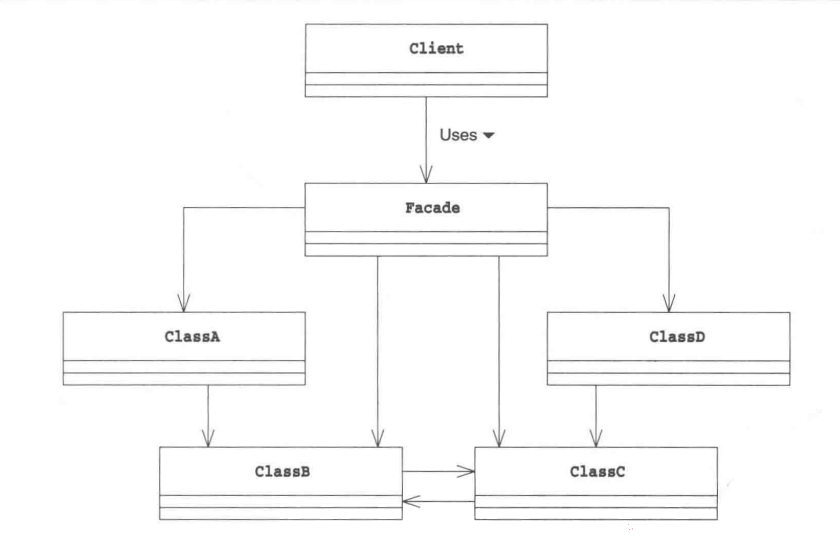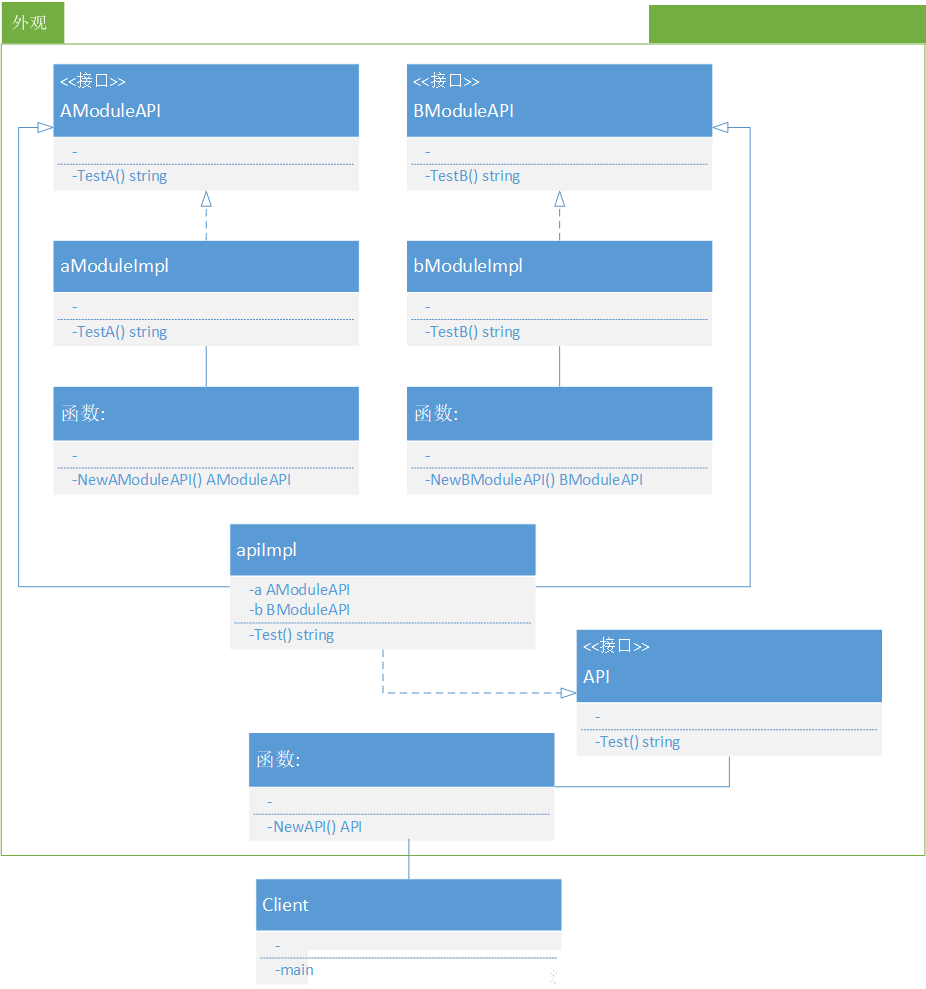10、 Golang 设计模式:10_外观模式
1、介绍
为子系统中的一组接口提供一个一致的界面。Facade模式定义了一个高层接口,这个接口使得这一子系统更加容易使用。外观模式可以让复杂的东西看起来简单。
外观模式,即Facade,是一个比较简单的模式。它的基本思想如下:
如果客户端要跟许多子系统打交道,那么客户端需要了解各个子系统的接口,比较麻烦。如果有一个统一的“中介”,让客户端只跟中介打交道,中介再去跟各个子系统打交道,对客户端来说就比较简单。所以Facade就相当于搞了一个中介。

2、示例
示例代码:
package main
import "fmt"
func NewAPI() API {
return &apiImpl{
a: NewAModuleAPI(),
b: NewBModuleAPI(),
}
}
//API is facade interface of facade package
type API interface {
Test() string
}
//facade implement
type apiImpl struct {
a AModuleAPI
b BModuleAPI
}
func (a *apiImpl) Test() string {
aRet := a.a.TestA()
bRet := a.b.TestB()
return fmt.Sprintf("%s\n%s", aRet, bRet)
}
//NewAModuleAPI return new AModuleAPI
func NewAModuleAPI() AModuleAPI {
return &aModuleImpl{}
}
//AModuleAPI ...
type AModuleAPI interface {
TestA() string
}
type aModuleImpl struct{}
func (*aModuleImpl) TestA() string {
return "A module running"
}
//NewBModuleAPI return new BModuleAPI
func NewBModuleAPI() BModuleAPI {
return &bModuleImpl{}
}
//BModuleAPI ...
type BModuleAPI interface {
TestB() string
}
type bModuleImpl struct{}
func (*bModuleImpl) TestB() string {
return "B module running"
}
func main() {
api:=NewAPI()
test := api.Test()
fmt.Println(test)
}
UML图:
